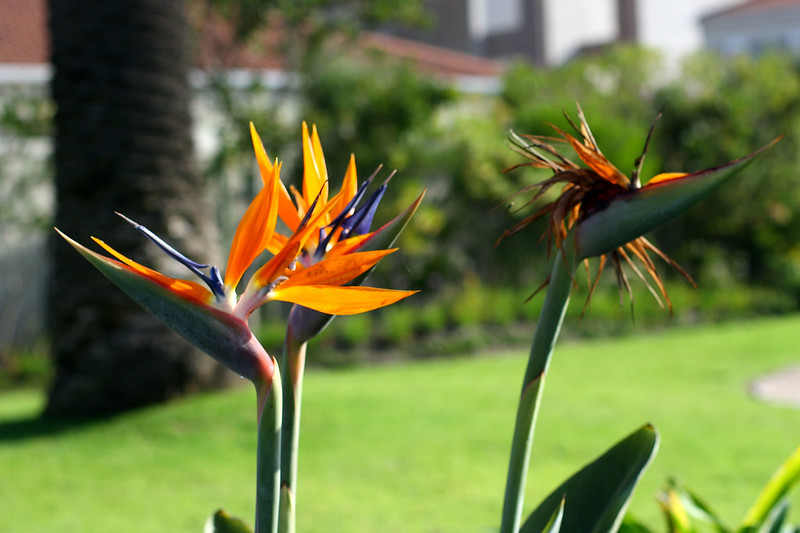Bird of Paradise plants, with their striking, exotic blooms and lush foliage, can be a captivating addition to any indoor or outdoor garden. Known for their vibrant, bird-like flowers, these tropical beauties require specific care to thrive and reach their full potential. From understanding their light and water needs to mastering the art of pruning and fertilizing, nurturing a Bird of Paradise can be both a rewarding and enjoyable experience for plant lovers. In this guide, we’ll delve into essential tips and tricks to help you care for your Bird of Paradise, ensuring it remains healthy and vibrant year-round.
Choosing the Right Location
Ideal Lighting Conditions
Bird of Paradise plants thrive in bright, indirect light, though they can tolerate some direct sunlight; however, too much can scorch their leaves. Ideally, place them near a south or west-facing window where they can enjoy filtered light for several hours a day. If growing outdoors, consider a spot where they receive morning sun and afternoon shade. Insufficient light can result in slower growth and fewer blooms. During winter months, when natural light is limited, you might need to supplement with a grow light to maintain their health. Always monitor the plant’s response to light and adjust its location if you notice any signs of distress like yellowing leaves or stunted growth. Proper lighting conditions are crucial for keeping your Bird of Paradise vibrant and flourishing year-round.
Temperature and Humidity Needs
Bird of Paradise plants prefer warm temperatures and high humidity. Ideally, maintain a temperature range between 65°F and 70°F during the day and not lower than 50°F at night. Sudden temperature fluctuations can stress the plant, so keep it away from drafts, heating vents, or air conditioning units. These tropical plants also thrive in humid environments, mimicking their native habitat. If the air in your home is dry, especially during winter, use a humidifier or place a tray of water near the plant to increase humidity. Another effective method is misting the leaves regularly to keep them hydrated. Ensuring the right temperature and humidity levels is essential for your Bird of Paradise to produce its iconic, vibrant flowers and lush foliage, contributing to a healthy and beautiful plant.
Watering and Feeding
Proper Watering Techniques
Proper watering is crucial for the health of your Bird of Paradise plant, which prefers consistently moist soil but dislikes being waterlogged. Water the plant thoroughly until water drains out of the bottom, then allow the top inch of soil to dry out before watering again. During the growing season, typically spring and summer, you may need to water more frequently, while in the fall and winter, reduce watering as the plant’s growth slows. Use lukewarm water to avoid shocking the roots, and ensure that the pot has good drainage to prevent root rot. Overwatering can lead to yellowing leaves and root diseases, while underwatering can cause wilting and browning of leaf edges. By mastering the balance of watering, you’ll keep your Bird of Paradise thriving and healthy.
Best Fertilizers to Use
Fertilizing your Bird of Paradise is essential for promoting lush growth and vibrant blooms. Use a balanced, water-soluble fertilizer with an equal ratio of nitrogen, phosphorus, and potassium, such as a 20-20-20 formula. During the active growing season, typically from spring to early fall, feed the plant every two weeks. In the winter months, reduce fertilization to once a month or stop altogether, as the plant’s growth slows down. Organic fertilizers like fish emulsion or seaweed extract can also be beneficial, providing a steady release of nutrients. Always follow the manufacturer’s instructions to avoid over-fertilizing, which can harm the plant by causing leaf burn or nutrient imbalances. By using the right fertilizers, you will support your Bird of Paradise’s health, ensuring it remains robust and beautiful throughout the year.

Pruning and Maintenance
When and How to Prune
Pruning is crucial for maintaining the shape and health of your Bird of Paradise plant. The best time to prune is in early spring, before the growing season begins. Start by removing any dead, damaged, or yellowing leaves to improve air circulation and reduce the risk of disease. Use sharp, clean pruning shears to make clean cuts near the base of the stems. Trim back any overgrown or leggy stems to encourage bushier growth and maintain a balanced shape. For indoor plants, occasional pruning of spent flowers can also help direct the plant’s energy towards new growth. Regularly inspect the plant for any signs of pests or disease, and take action promptly to keep your Bird of Paradise healthy. By pruning correctly, you’ll not only enhance the plant’s appearance but also promote vigorous growth and vibrant blooms.
Pest and Disease Prevention
Preventing pests and diseases is essential for the health of your Bird of Paradise plant. Common pests like spider mites, aphids, and scale insects can be problematic. Regularly inspect your plant, especially the undersides of leaves, for any signs of infestations. If you notice pests, promptly treat them with insecticidal soap or neem oil. Maintaining proper humidity levels and ensuring good air circulation can also help deter pests. Diseases such as root rot and leaf spot can arise from overwatering or poor drainage. To prevent these, ensure the soil remains well-drained and avoid waterlogging. Remove any diseased leaves immediately to prevent the spread of infection. Regularly clean your plant’s leaves with a damp cloth to remove dust and potential pests. By staying vigilant and proactive, you can keep your Bird of Paradise healthy and free from common pests and diseases.

